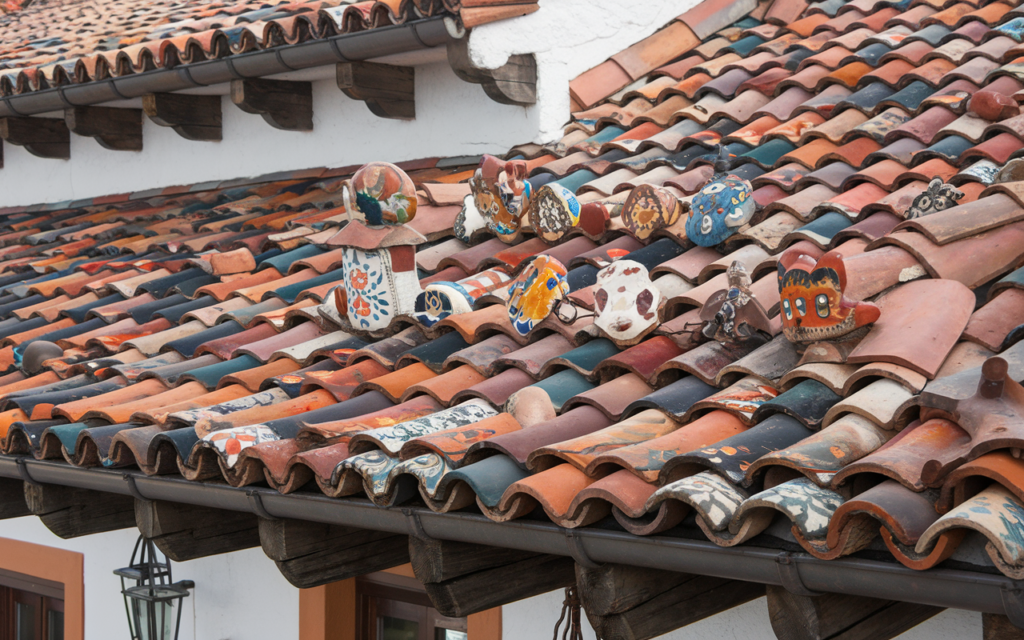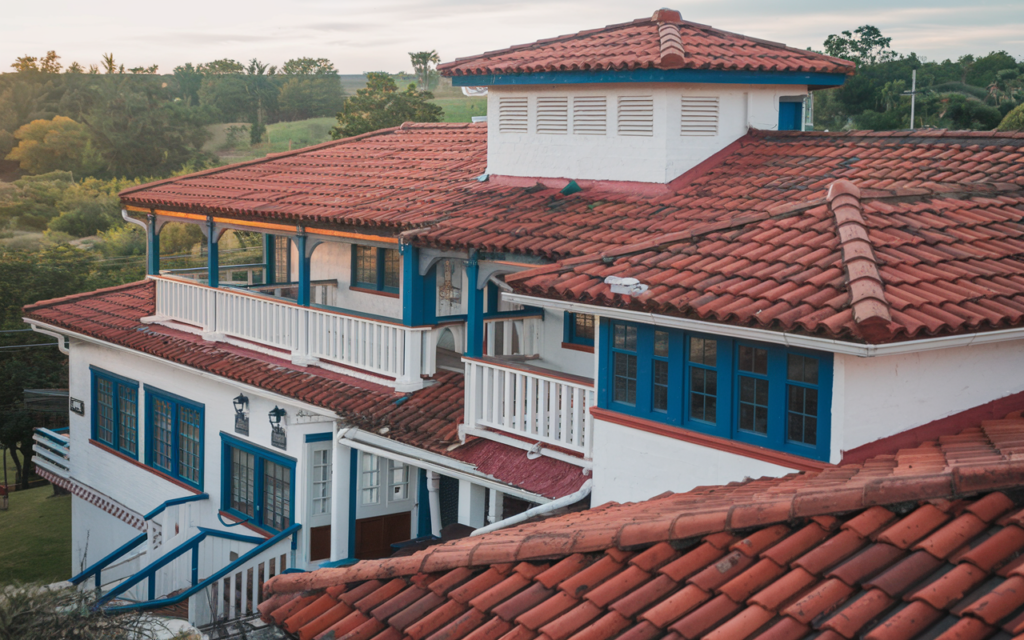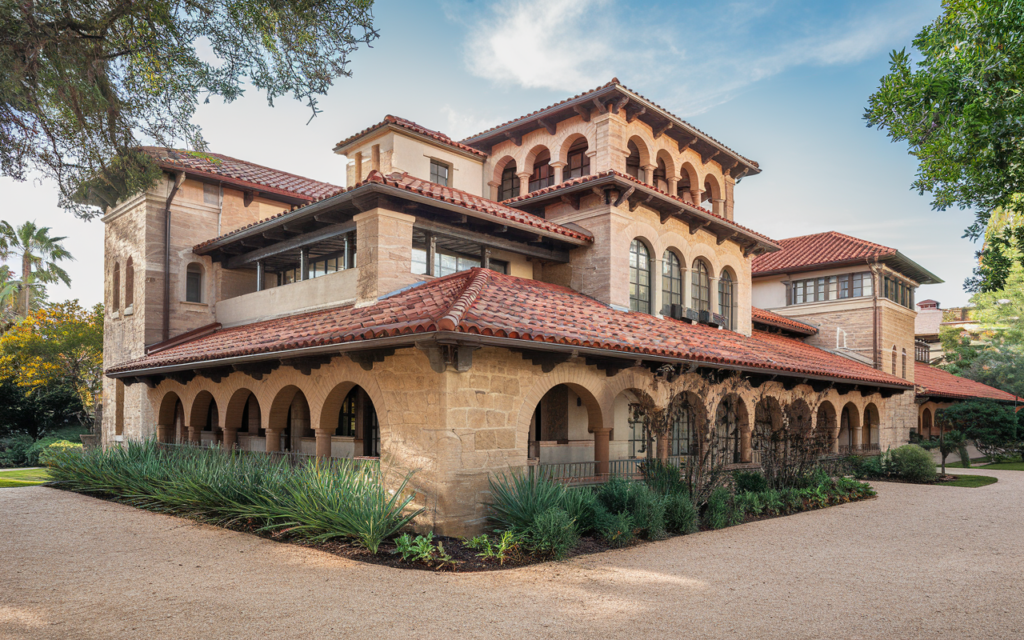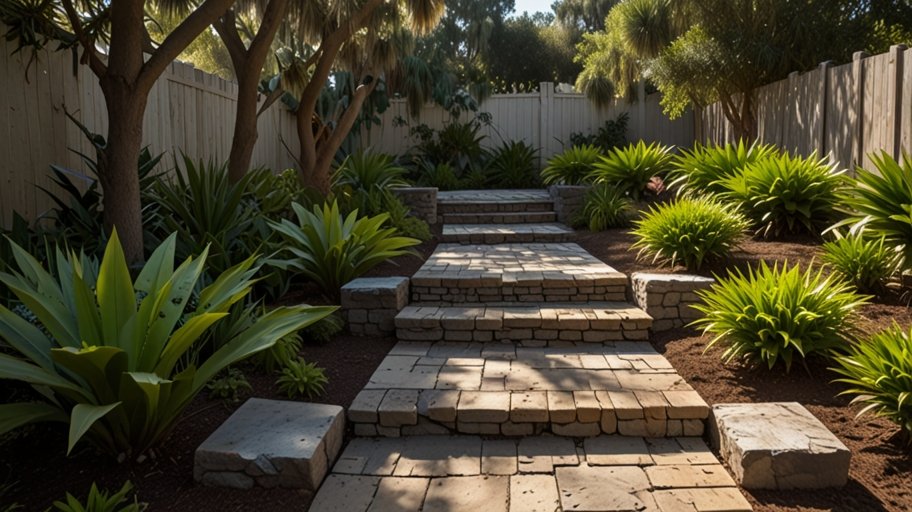Introduction
The architectural allure of Spanish-style homes often lies in their distinctive roofing, characterized by clay tiles that exude a timeless charm. Among the numerous roofing styles, the Spanish Roof Tile Style Coloras Clavas Parsitie stands out as a symbol of beauty, durability, and cultural heritage. With its vibrant colors, intricate design, and exceptional performance, this style of roofing has captivated architects, homeowners, and designers across the globe.
This comprehensive guide explores the historical origins, unique features, advantages, and modern applications of Spanish Roof Tile Style Coloras Clavas Parsitie. By delving into its significance and functionality, we aim to highlight why this roofing option continues to be a preferred choice for traditional and contemporary structures alike.
Historical Origins of Spanish Roof Tile Style Coloras Clavas Parsitie
The roots of the Spanish Roof Tile Style Coloras Clavas Parsitie can be traced back to ancient Spain, where clay tiles, also known as “Tejas,” were a staple of Mediterranean architecture. The technique of crafting these tiles dates to the Roman Empire, where they were initially used for their ability to protect homes from the harsh Mediterranean sun and occasional torrential rains.
The term “Coloras Clavas Parsitie” refers to the unique color variations and interlocking design of these tiles. Traditionally, these tiles were handmade from natural clay and fired in kilns to achieve their characteristic strength and earthy tones. Over centuries, Spanish artisans refined the process, introducing decorative elements, glazes, and more vibrant colors to the tiles, elevating them into an art form. Today, Spanish Roof Tile Style Coloras Clavas Parsitie reflects a harmonious blend of historical craftsmanship and modern innovation.

Key Characteristics of Spanish Roof Tile Style Coloras Clavas Parsitie
The appeal of Spanish Roof Tile Style Coloras Clavas Parsitie lies in its distinct design and exceptional performance. Several features distinguish these tiles, making them a preferred choice for roofing:
Unique Color Variations
True to the name, Coloras Clavas Parsitie is renowned for its vibrant and earthy color palette. Shades of terracotta, rust, sand, and even muted greens or blues are common, offering versatility to complement various architectural styles.
Iconic Curved Design
The classic barrel or “S-tile” shape is a hallmark of this roofing style. This curvature not only enhances aesthetic appeal but also serves a functional purpose, facilitating efficient water drainage during rain.
Durability and Longevity
Keeping in view of weather conditions, these tiles are Crafted from high-quality clay or concrete. The robust material ensures longevity, often outlasting other roofing options by decades.
Thermal Insulation
Spanish Roof Tile Style Coloras Clavas Parsitie is celebrated for its natural thermal efficiency. The tiles create an insulating air gap, helping to maintain comfortable indoor temperatures regardless of the climate.
Eco-Friendly Composition
These tiles are an environmentally sustainable roofing option. Many manufacturers also prioritize eco-conscious production methods, reducing the environmental impact.

Benefits
Choosing Spanish Roof Tile Style Coloras Clavas Parsitie for your home or building comes with numerous benefits. These advantages go beyond aesthetics, offering practical solutions for modern living:
Aesthetic Versatility
One of the primary reasons homeowners and architects favor this roofing style is its timeless beauty. The warm, earthy tones and flowing patterns create a visual harmony that complements Mediterranean, Spanish Colonial, and even contemporary designs.
Weather Resistance
Spanish Roof Tile Style Coloras Clavas Parsitie is specifically designed to endure challenging weather conditions. Its interlocking design prevents water infiltration, while the material’s density ensures resistance to hail, snow, and high winds.
Fire Resistance
The clay or concrete composition of these tiles makes them naturally resistant to fire, offering enhanced safety for your home.
Energy Efficiency
By reflecting sunlight and creating an insulating barrier, these tiles reduce the need for excessive heating or cooling, ultimately lowering energy bills.
Low Maintenance
Once installed, Spanish roof tiles require minimal upkeep. Their durable surface resists mold, mildew, and pests, making them a hassle-free roofing option.
The Role of Color in Spanish Roof Tile Style Coloras Clavas Parsitie
Color is a defining element of the Spanish Roof Tile Style Coloras Clavas Parsitie, adding depth and character to any structure. The use of natural pigments in the clay tiles ensures a rich, enduring hue that does not fade easily under sunlight. Different color combinations can evoke varying architectural moods:
- Terracotta Red: This color is synonymous with Mediterranean and Spanish-style homes.
- Sand Beige: A neutral option that blends seamlessly with natural landscapes, ideal for desert or coastal areas.
- Muted Greens and Blues: Often used in more contemporary designs, these colors add a modern twist while retaining the classic appeal.
- Multi-Toned Tiles: Combining multiple shades in a single roof creates a dynamic, textured look that enhances visual interest.
The rich palette of Coloras Clavas Parsitie ensures there’s an option for every design preference, from rustic countryside homes to sleek urban dwellings.

Installation Process of Spanish Roof Tile Style Coloras Clavas Parsitie
The proper installation of Spanish Roof Tile Style Coloras Clavas Parsitie is critical to its functionality and longevity. Here’s an overview of the installation process:
Roof Preparation
The roof deck must be reinforced to support the weight of the tiles, which are significantly heavier than asphalt shingles or metal roofs.
Underlayment Application
A waterproof underlayment is applied to protect the roof deck from moisture penetration, adding an extra layer of defense.
Tile Layout and Placement
Tiles are laid in rows, beginning at the eaves and working upward. Each tile overlaps with the one below it, creating a watertight seal.
Secure Attachment
Depending on the climate and wind exposure, tiles are secured with nails, clips, or adhesive. It ensures the roof remains intact during storms or high winds.
Finishing Touches
Ridge tiles and other decorative elements are added to complete the look, enhancing both functionality and aesthetics.
Professional installation is highly recommended for Spanish Roof Tile Style Coloras Clavas Parsitie to ensure the roof performs optimally and achieves its full lifespan.
Modern Applications of Spanish Roof Tile Style Coloras Clavas Parsitie
While steeped in tradition, Spanish Roof Tile Style Coloras Clavas Parsitie has found a place in contemporary architecture. Its versatility allows it to adapt to various design trends, including:
- Eco-Friendly Homes
- With their sustainable composition and energy efficiency, these tiles are a popular choice for green building projects.
- Luxury Resorts
- High-end resorts often use Spanish roof tiles to create a Mediterranean-inspired aesthetic, enhancing the guest experience.
- Urban Developments
- In urban settings, Spanish Roof Tile Style Coloras Clavas Parsitie adds warmth and character, distinguishing structures from the monotony of modern skyscrapers.
Maintaining Spanish Roof Tile Style Coloras Clavas Parsitie
To preserve the beauty and functionality of Spanish Roof Tile Style Coloras Clavas Parsitie, regular maintenance is essential. Here are some tips for keeping your roof in top condition:
- Periodic Cleaning
- Remove debris, such as leaves and dirt, to prevent blockages in the tiles ‘ interlocking channels.
- Inspection for Damage
- Check for cracked or loose tiles after severe weather and replace them promptly to avoid further damage.
- Sealant Application
- Applying a protective sealant can enhance the tiles’ resistance to water and UV rays, prolonging their lifespan.
With proper care, a Spanish roof can remain beautiful and functional for decades, adding value to your property.
Conclusion
The Spanish Roof Tile Style Coloras Clavas Parsitie is more than just a roofing material; it’s a timeless representation of craftsmanship, tradition, and innovation. From its rich historical roots to its modern-day applications, this roofing style continues to inspire architects and homeowners alike. Its vibrant colors, durable construction, and energy-efficient properties make it a top choice for those seeking both functionality and aesthetic appeal.
Whether restoring a historic villa or designing a contemporary masterpiece, choosing Spanish Roof Tile Style Coloras Clavas Parsitie ensures your structure stands out with unmatched elegance and resilience. Embrace the beauty and practicality of this iconic roofing style and transform your home into a timeless architectural gem.



